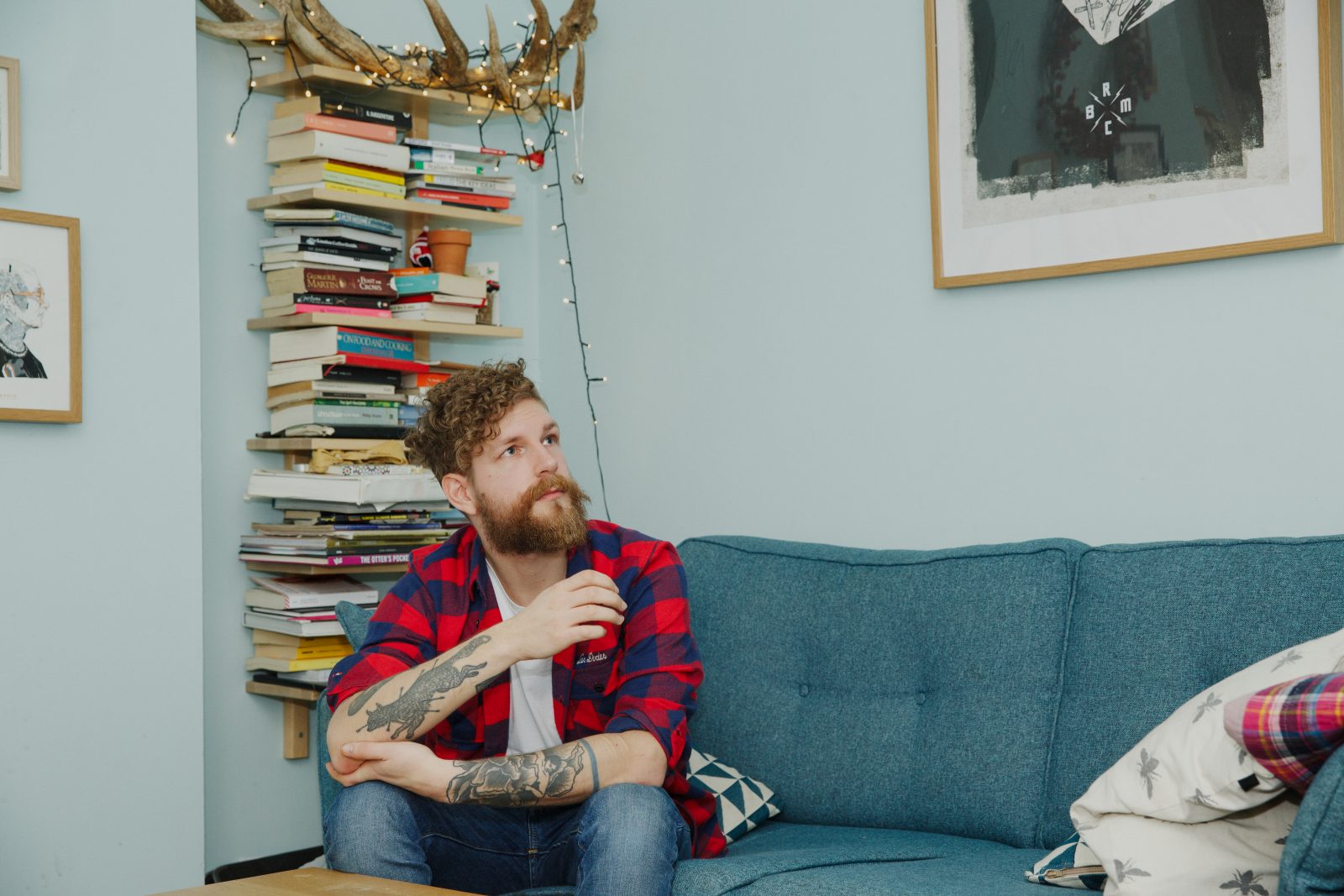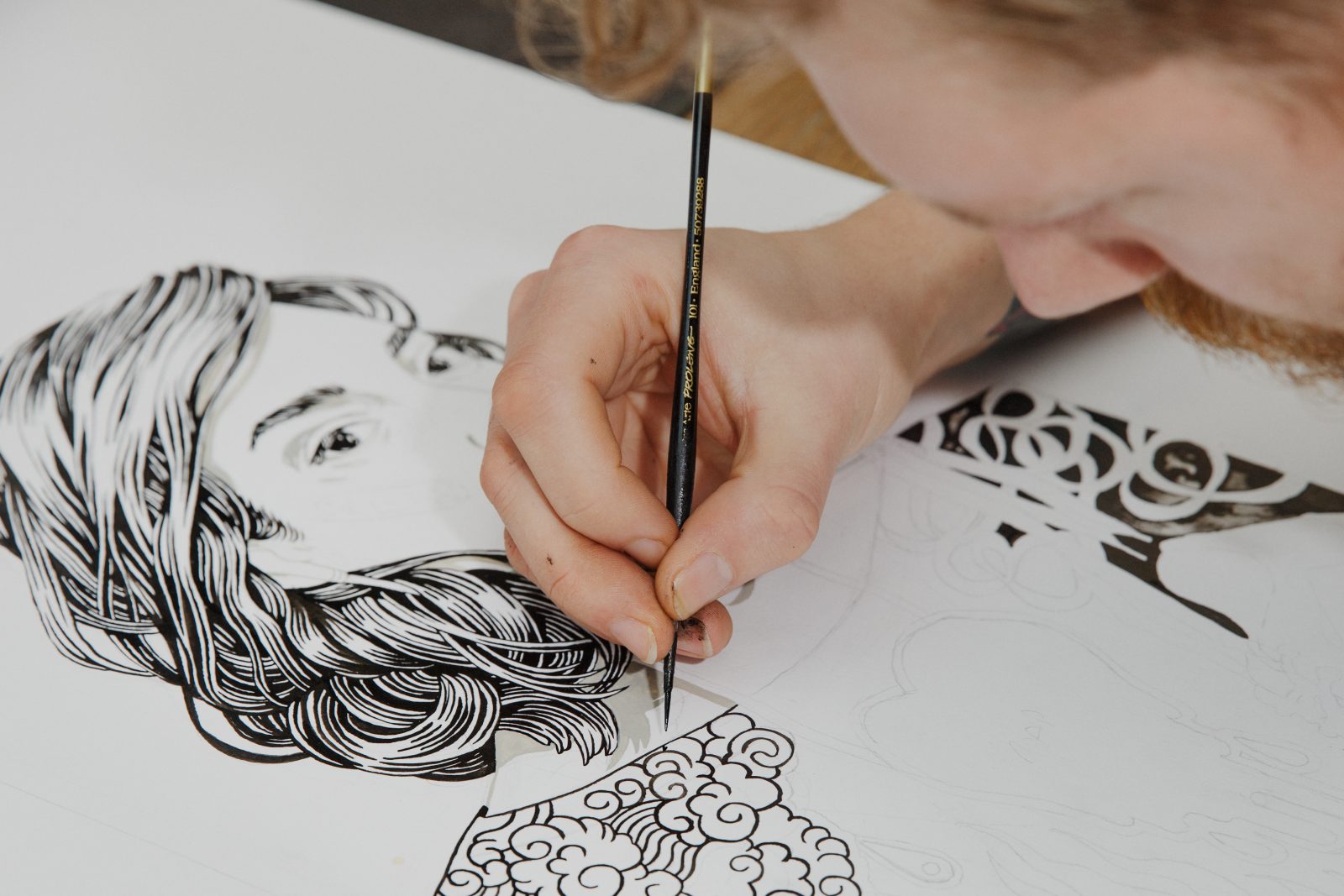The Society Six features a selection of new works that caught our eye from artists who recently joined the Society6 community. Come in, explore and find your new favorites.
Michael Howard’s illustrations pack a punch, but his bold line work and punk portraits don’t stay within one predictable genre.
Look closer and you’ll see very human elements of sadness and fear, insecurity and apathy written on the faces of his rough-and-tumble subjects. We sat down with Michael in his London flat and chatted about everything from Formula 1 racing to the role of the artist in society and how hard work is really the key to everything. Read on below and check out his capsule collection designed specifically to celebrate our Art Quarterly 4.1

When did you first start taking art seriously?
I can’t place a point in time when this actually happened. It’s sort of progressed slowly the more I’ve developed my work. The more hours you put in, the more you fine-tune yourself and find your “voice.” Though I would say, the first year I moved down to London, working part-time, every other moment I could get was spent drawing, developing, experimenting. I guess being faced with reality straight out of university pushed me to do more.
Tell me a bit more about your “Things You Don’t See” series. How did that come about?
This series was a response to myself, and a way to relate to and support others through my work. For me, it was a way of visually relating and trying to understand forms of mental illness and make it more communicative. I think creating pieces that people can emotionally relate to—or that bring people together to discuss something they normally wouldn’t—can only benefit others, through discussion. If I can make a piece that makes somebody take a minute to look at and relate to and feel just a tiny bit less lonely, it’s worth it.
What is a huge misconception that people often have about you from just looking at your work?
I used to get a lot of people thinking that my work was created by a woman, which I found really rather bizarre—that people would assign a gender to a way a person draws a line or interprets a subject matter. I think the misconceptions have gotten fewer as the work has developed more clarity.

What advice would you give people who feel like their taste level exceeds their talent level? How can someone be inspired to keep practicing when they know the work they’re creating isn’t top notch yet?
Just work and keep going. If you put enough hours into a technique or style or craft, you are only going to improve and learn. If you expect to just pick up a style straight away and master it, then the approach is wrong. This might sound harsh, but the only way to improve is to work, work, work. Inspiration is overrated.
How do you keep track of all the things that inspire you?
Usually, it helps to create a workspace that reflects yourself or your mental space when creating. Objects, certain drawings pinned to a wall, all the usual stuff. Keeping track of work you like via Instagram or Tumblr, saving favorites or screenshotting work that blows your mind. Keeping an inspiration folder that you can take a look at and go through really helps.
I’d say a good 75% of things saved on my desktop are all inspiration-related images, videos, you name it. What most people would call “inspiration,” I’d say is more like research. It’s always best to be a sponge and to absorb those things that you look at and make you think “I can never do that.” It can only improve your own sense of identity. If a person can create a piece of work that makes you think that way, you could be that very same person for somebody else.
“…the only way to improve is to work, work, work. Inspiration is overrated.”
Your work has elements of sadness mingled with humor and hope—is this intentional?
Completely. I would say it’s a reflection of self more than anything, communicating my mental state or what I’m thinking through each piece or coming up with an idea that would suit the mood. It’s a way to balance a piece in the sense that some artists balance a piece with light or with color, I tend to balance it with these flash pieces with the emotions—though I’ve never really consciously looked at it this way, so maybe I’ve learnt something myself through answering this.
What has been the greatest joy of being an illustrator?
So far, I’d say a highlight would be winning the Red Bull illustration competition. I’m a pretty big Formula 1 fan, so it gave me an excuse to make a piece that I would not have normally. I didn’t think anything of it and didn’t expect anything from it, I was just happy that I was able to make a piece as a fan. Then when I got a call from my dad saying that I’d won—I thought he was having me on—I was as giddy as a school girl. Then to get a signed hat and shoes by the drivers for me was a reward well worth the effort.
What do you feel is the role of the artist in our modern society?
It’s a big question. This will always be up for debate or be called into question. For me, the role or purpose is to be able to question and communicate openly. To create whatever you want, in a way that you want without fear of judgment. To put things in the public eye that might change viewers’ perspective on the subject matter or connect people through a piece—which is needed more now than ever. It’s a surrealist philosophy in that sense.

Photography by Stephanie Alcaino
Comments